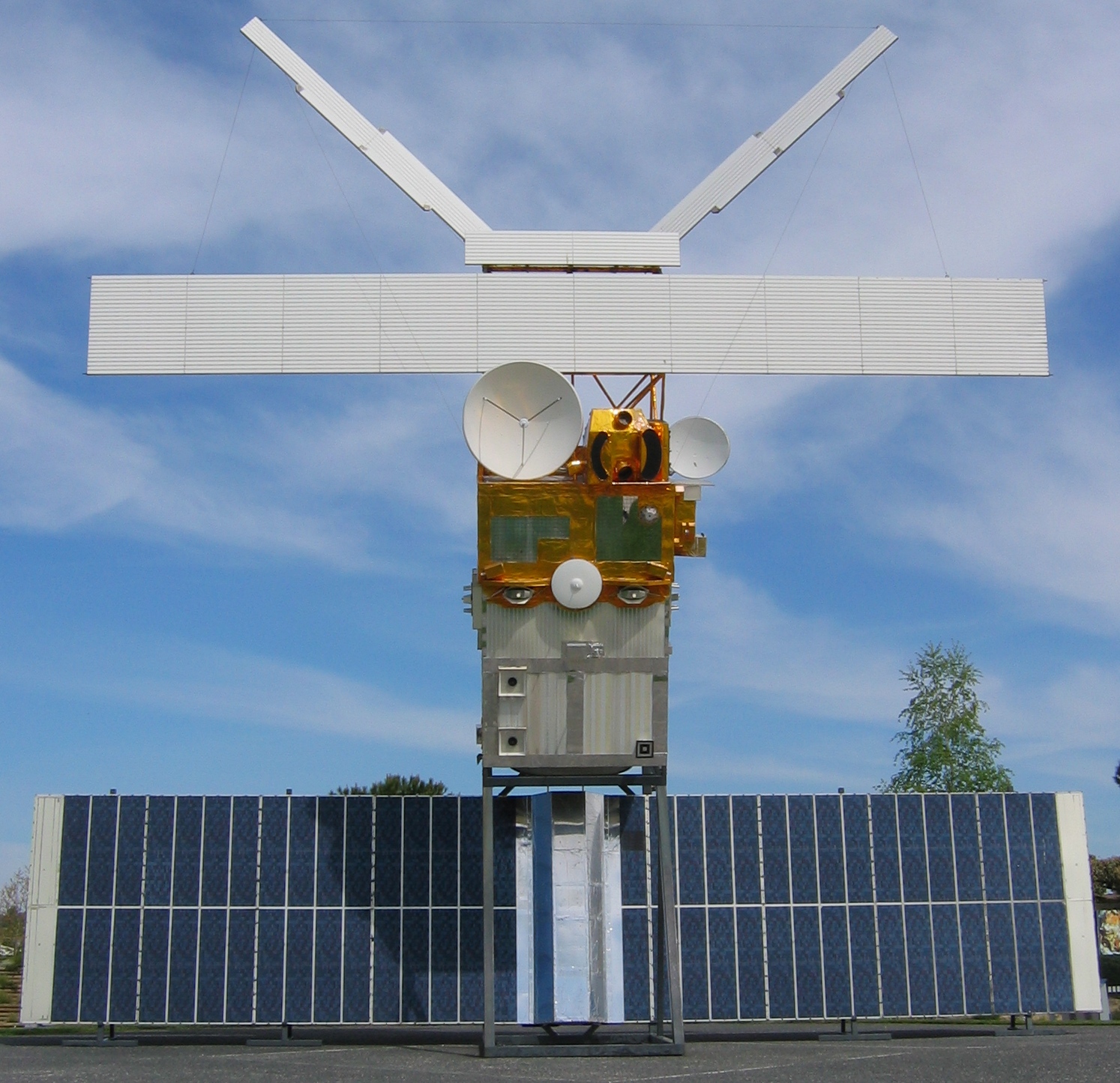|
Chris Rapley
Christopher Graham Rapley (born 8 April 1947) is a British scientist and scientific administrator. He is Professor of Climate Science at University College London, a member of the Academia Europaea, Chair of the European Science Foundation's European Space Sciences Committee, Patron of the Surrey Climate Commission, a member of the scientific advisory board of Scientists Warning, a member of the UK Clean Growth Fund Advisory Board, and a member of the UK Parliamentary and Scientific Committee. His previous posts include Director of the Science Museum, London, Director of the British Antarctic Survey, Chairman of the London Climate Change Partnership, President of the Scientific Committee on Antarctic Research, Vice President of the European Science Foundation's European Polar Board, Executive Director of the International Geosphere-Biosphere Programme, and founder and leader of UCL Mullard Space Science Laboratory's (MSSL) Remote Sensing Group. Life and career Born on 8 April 1 ... [...More Info...] [...Related Items...] OR: [Wikipedia] [Google] [Baidu] |
King Edward's School, Bath
King Edward's School (KES), Bath, Somerset, England is an independent co-educational day school providing education for 1,016 pupils aged 3 to 18. The school is a member of The Headmasters' and Headmistresses' Conference. The school was established in the 16th century in a city centre site, founded in 1552. In the 1960s it moved to the outskirts onto a multi building site. In addition to the academic curriculum the schools includes drama, music, sport and a combined cadet force. King Edward's School Bath was judged as "excellent" in every category in the school's 2015 Independent Schools Inspectorate (ISI) report. The report noted that "The school's extra-curricular provision is outstanding", "Achievements outside the curriculum are both numerous and outstanding" and "The quality of the pupils' achievements and learning is excellent". The school was ranked as one of the top four independent schools in the south west by ''The Sunday Times Schools Guide'', Parent Power Survey ba ... [...More Info...] [...Related Items...] OR: [Wikipedia] [Google] [Baidu] |
Mullard Space Science Laboratory
The UCL Mullard Space Science Laboratory (MSSL) is the United Kingdom's largest university space research group. MSSL is part of the Department of Space and Climate Physics at University College London (UCL), one of the first universities in the world to conduct space research. Since its establishment, MSSL has participated in 35 satellite missions, 10 of which are currently in operation, and in over 200 sounding rocket experiments. It takes its name from Mullard Limited, and is located in Holmbury St Mary in the Surrey Hills AONB, near the town of Dorking in the county of Surrey, England. History In 1957 Sir Harrie Massey of UCL directed the first Skylark rocket experiments. In 1962 Massey led a team from UCL, Imperial College London, the University of Birmingham and the University of Leicester that developed many of the instruments on Ariel 1, the world's first multinational spacecraft. By 1966 the demands had outgrown the laboratory space available in London and Massey a ... [...More Info...] [...Related Items...] OR: [Wikipedia] [Google] [Baidu] |
Envisat
Envisat ("Environmental Satellite") is a large inactive Earth-observing satellite which is still in orbit and now considered space debris. Operated by the European Space Agency (ESA), it was the world's largest civilian Earth observation satellite. It was launched on 1 March 2002 aboard an Ariane 5 from the Guyana Space Centre in Kourou, French Guiana, into a Sun synchronous polar orbit at an altitude of 790 ± 10 km. It orbits the Earth in about 101 minutes, with a repeat cycle of 35 days. After losing contact with the satellite on 8 April 2012, ESA formally announced the end of Envisat's mission on 9 May 2012. Envisat cost 2.3 billion Euro (including 300 million Euro for 5 years of operations) to develop and launch. The mission has been replaced by the Sentinel series of satellites. The first of these, Sentinel 1, has taken over the radar duties of Envisat since its launch in 2014. Mission Envisat was launched as an Earth observation satellite. Its objec ... [...More Info...] [...Related Items...] OR: [Wikipedia] [Google] [Baidu] |
ERS-1
European Remote Sensing satellite (ERS) was the European Space Agency's first Earth-observing satellite programme using a polar orbit. It consisted of 2 satellites, ERS-1 and ERS-2. ERS-1 ERS-1 launched 17 July 1991 from Guiana Space Centre aboard an Ariane 4 rocket. The satellite was put into a Sun-synchronous polar orbit at an altitude of 782–785 km. ERS-1 failed on 10 March 2000 after nine years in orbit. Instruments ERS-1 carried an array of Earth-observation instruments that gathered information about the Earth (land, water, ice and atmosphere) using a variety of measurement principles. These included: * RA (Radar Altimeter) is a single frequency nadir-pointing radar altimeter operating in the Ku band. * ATSR-1 ( Along-Track Scanning Radiometer) is a 4 channel infrared radiometer and microwave sounder for measuring temperatures at the sea-surface and the top of clouds. * SAR ( synthetic-aperture radar) operating in C band can detect changes in surface heig ... [...More Info...] [...Related Items...] OR: [Wikipedia] [Google] [Baidu] |
Remote Sensing
Remote sensing is the acquisition of information about an object or phenomenon without making physical contact with the object, in contrast to in situ or on-site observation. The term is applied especially to acquiring information about Earth and other planets. Remote sensing is used in numerous fields, including geography, land surveying and most Earth science disciplines (e.g. hydrology, ecology, meteorology, oceanography, glaciology, geology); it also has military, intelligence, commercial, economic, planning, and humanitarian applications, among others. In current usage, the term ''remote sensing'' generally refers to the use of satellite- or aircraft-based sensor technologies to detect and classify objects on Earth. It includes the surface and the atmosphere and oceans, based on propagated signals (e.g. electromagnetic radiation). It may be split into "active" remote sensing (when a signal is emitted by a satellite or aircraft to the object and its reflection dete ... [...More Info...] [...Related Items...] OR: [Wikipedia] [Google] [Baidu] |
Solar Maximum Mission
The Solar Maximum Mission satellite (or SolarMax) was designed to investigate Solar phenomena, particularly solar flares. It was launched on February 14, 1980. The SMM was the first satellite based on the Multimission Modular Spacecraft bus manufactured by Fairchild Industries, a platform which was later used for Landsats 4 and 5 as well as the Upper Atmosphere Research Satellite. After an attitude control failure in Nov 1980 it was put in standby mode until April 1984 when it was repaired by a Shuttle mission. The Solar Maximum Mission ended on December 2, 1989, when the spacecraft re-entered the atmosphere and burned up over the Indian Ocean. Instruments Failure and repair The white-light coronagraph/polarimeter (C/P) took coronal images for about six months from March 1980 before suffering an electronics failure in September that prevented operation. In November 1980, the second of four fuses in SMM's attitude control system failed, causing it to rely on its magnetorqu ... [...More Info...] [...Related Items...] OR: [Wikipedia] [Google] [Baidu] |
NASA
The National Aeronautics and Space Administration (NASA ) is an independent agency of the US federal government responsible for the civil space program, aeronautics research, and space research. NASA was established in 1958, succeeding the National Advisory Committee for Aeronautics (NACA), to give the U.S. space development effort a distinctly civilian orientation, emphasizing peaceful applications in space science. NASA has since led most American space exploration, including Project Mercury, Project Gemini, the 1968-1972 Apollo Moon landing missions, the Skylab space station, and the Space Shuttle. NASA supports the International Space Station and oversees the development of the Orion spacecraft and the Space Launch System for the crewed lunar Artemis program, Commercial Crew spacecraft, and the planned Lunar Gateway space station. The agency is also responsible for the Launch Services Program, which provides oversight of launch operations and countdown m ... [...More Info...] [...Related Items...] OR: [Wikipedia] [Google] [Baidu] |
Doctor Of Philosophy
A Doctor of Philosophy (PhD, Ph.D., or DPhil; Latin: or ') is the most common degree at the highest academic level awarded following a course of study. PhDs are awarded for programs across the whole breadth of academic fields. Because it is an earned research degree, those studying for a PhD are required to produce original research that expands the boundaries of knowledge, normally in the form of a dissertation, and defend their work before a panel of other experts in the field. The completion of a PhD is often a requirement for employment as a university professor, researcher, or scientist in many fields. Individuals who have earned a Doctor of Philosophy degree may, in many jurisdictions, use the title '' Doctor'' (often abbreviated "Dr" or "Dr.") with their name, although the proper etiquette associated with this usage may also be subject to the professional ethics of their own scholarly field, culture, or society. Those who teach at universities or work in academic, e ... [...More Info...] [...Related Items...] OR: [Wikipedia] [Google] [Baidu] |
University College, London
, mottoeng = Let all come who by merit deserve the most reward , established = , type = Public research university , endowment = £143 million (2020) , budget = £1.544 billion (2019/20) , chancellor = Anne, Princess Royal(as Chancellor of the University of London) , provost = Michael Spence , head_label = Chair of the council , head = Victor L. L. Chu , free_label = Visitor , free = Sir Geoffrey Vos , academic_staff = 9,100 (2020/21) , administrative_staff = 5,855 (2020/21) , students = () , undergrad = () , postgrad = () , coordinates = , campus = Urban , city = London, England , affiliations = , colours = Purple and blue celeste , nickname ... [...More Info...] [...Related Items...] OR: [Wikipedia] [Google] [Baidu] |
Radio Astronomy
Radio astronomy is a subfield of astronomy that studies celestial objects at radio frequencies. The first detection of radio waves from an astronomical object was in 1933, when Karl Jansky at Bell Telephone Laboratories reported radiation coming from the Milky Way. Subsequent observations have identified a number of different sources of radio emission. These include stars and galaxies, as well as entirely new classes of objects, such as radio galaxies, quasars, pulsars, and masers. The discovery of the cosmic microwave background radiation, regarded as evidence for the Big Bang theory, was made through radio astronomy. Radio astronomy is conducted using large radio antennas referred to as radio telescopes, that are either used singularly, or with multiple linked telescopes utilizing the techniques of radio interferometry and aperture synthesis. The use of interferometry allows radio astronomy to achieve high angular resolution, as the resolving power of an interferom ... [...More Info...] [...Related Items...] OR: [Wikipedia] [Google] [Baidu] |
Master Of Science
A Master of Science ( la, Magisterii Scientiae; abbreviated MS, M.S., MSc, M.Sc., SM, S.M., ScM or Sc.M.) is a master's degree in the field of science awarded by universities in many countries or a person holding such a degree. In contrast to the Master of Arts degree, the Master of Science degree is typically granted for studies in sciences, engineering and medicine and is usually for programs that are more focused on scientific and mathematical subjects; however, different universities have different conventions and may also offer the degree for fields typically considered within the humanities and social sciences. While it ultimately depends upon the specific program, earning a Master of Science degree typically includes writing a thesis. The Master of Science degree was first introduced at the University of Michigan in 1858. One of the first recipients of the degree was De Volson Wood, who was conferred a Master of Science degree at the University of Michigan in 1859. ... [...More Info...] [...Related Items...] OR: [Wikipedia] [Google] [Baidu] |








